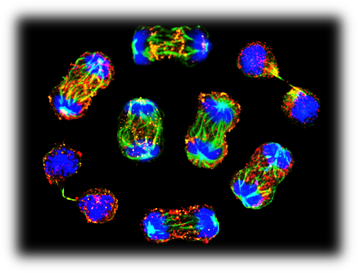Asymmetric CD8 T cell division and fate control

Upon cognate antigen activation, one single naïve CD8 T cell can give rise to different progenies, including effector and memory cells. How this diversity is generated, is still incompletely elucidated, but some mechanisms were reported to be involved in fate determination, such as differential strength of TCR activation, differential exposure to inflammatory stimuli, leading to differential transcriptional and metabolic profiles, epigenetic control of gene expression, and asymmetric cell division (ACD). To demonstrate that ACD acts as a means to foster diversification, we recently showed that the ability to undergo ACD is limited to CD8 T cells endowed with “stemness” (i.e. naïve and memory CD8 T cells). In contrast, terminally differentiated cells (i.e. effector and exhausted CD8 T cells) lacked the ability to exert ACD. The ability to undergo ACD correlated with memory potential and experimental augmentation of ACD potential increased this feature. These observations raise several questions: how – mechanistically – is ACD is implemented in CD8 T cells exhibiting the ability to give rise to progenies with different fates, is this fate determination indeed hard-wired after the first mitosis following activation, and which signaling hubs are differentially inherited and active on progenies of cells giving rise to different fates?
Related publications:
Borsa, M., I. Barnstorf, N. S. Baumann, K. Pallmer, A. Yermanos, F. Gräbnitz, N. Barandun, A. Hausmann, I. Sandu, Y. Barral, and A. Oxenius. 2019. Modulation of asymmetric cell division as a mechanism to boost CD8(+) T cell memory. Sci Immunol 12;4(34). [external page Abstract]